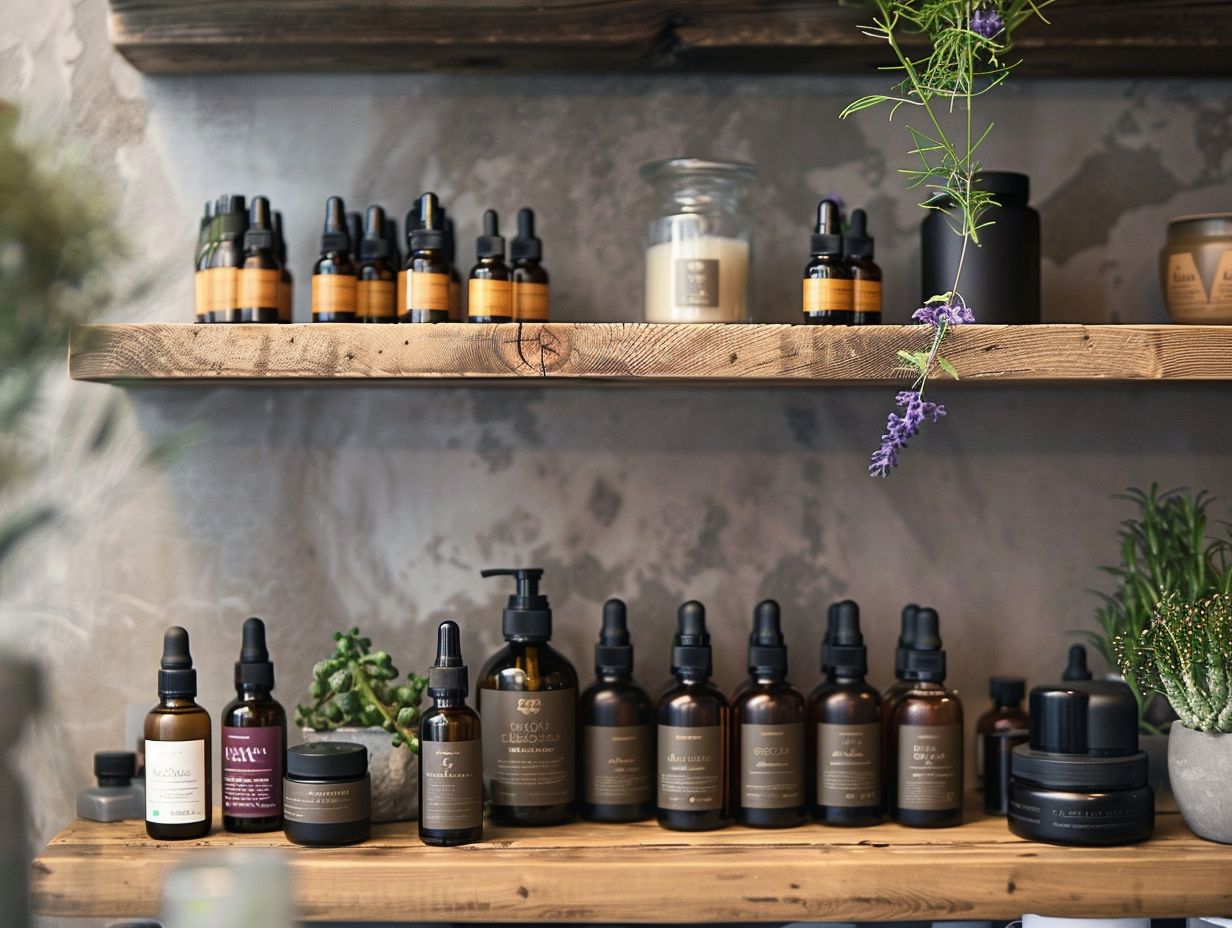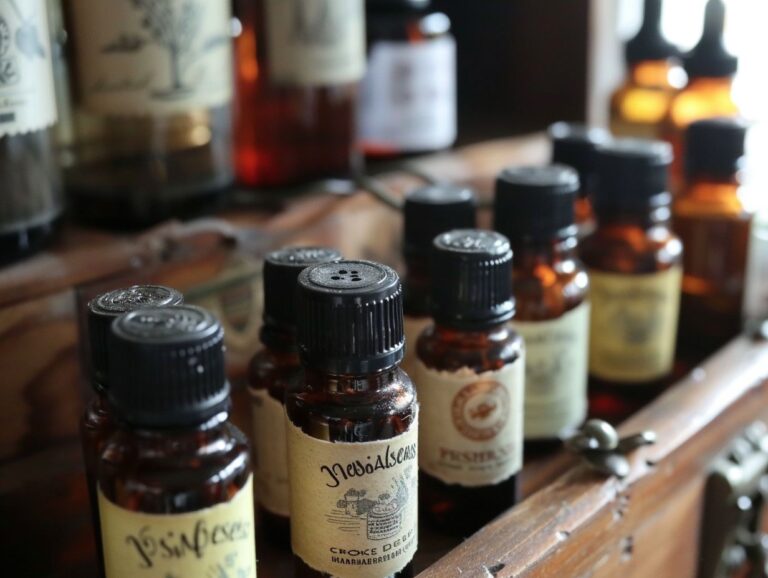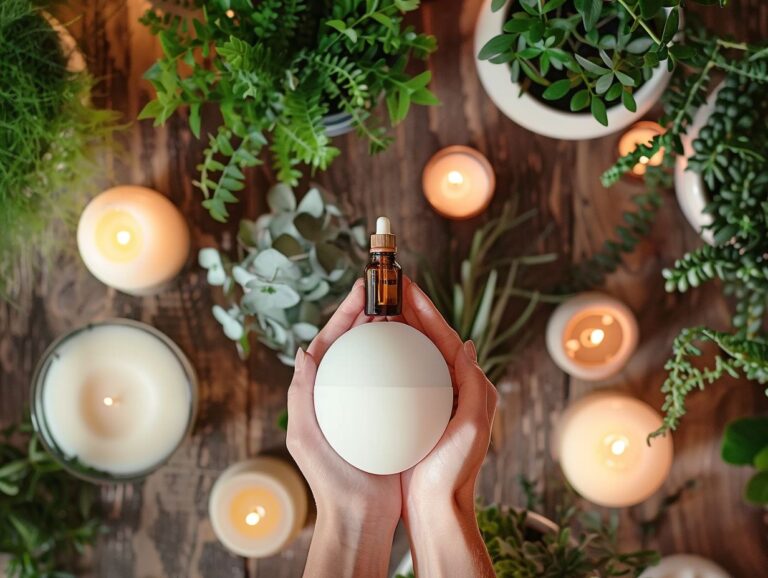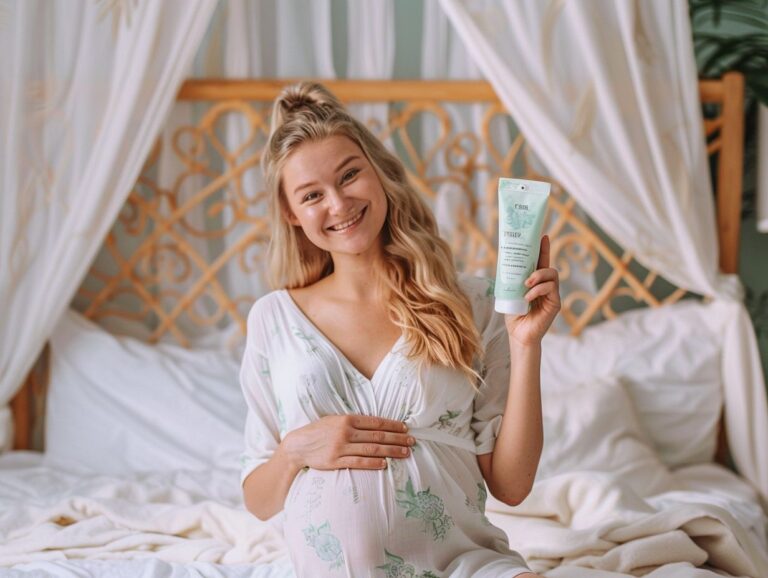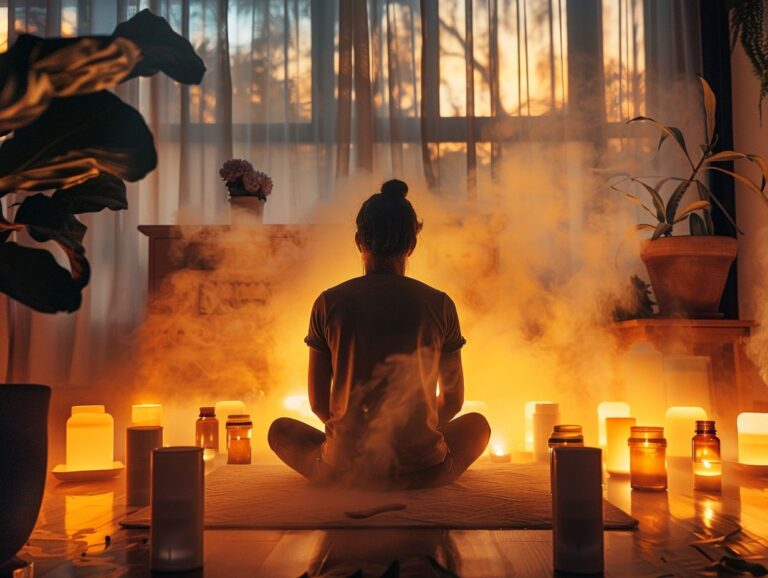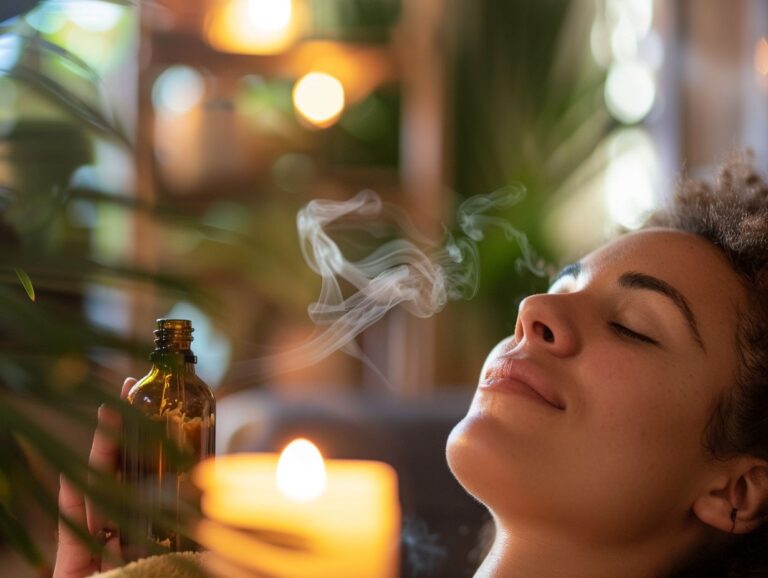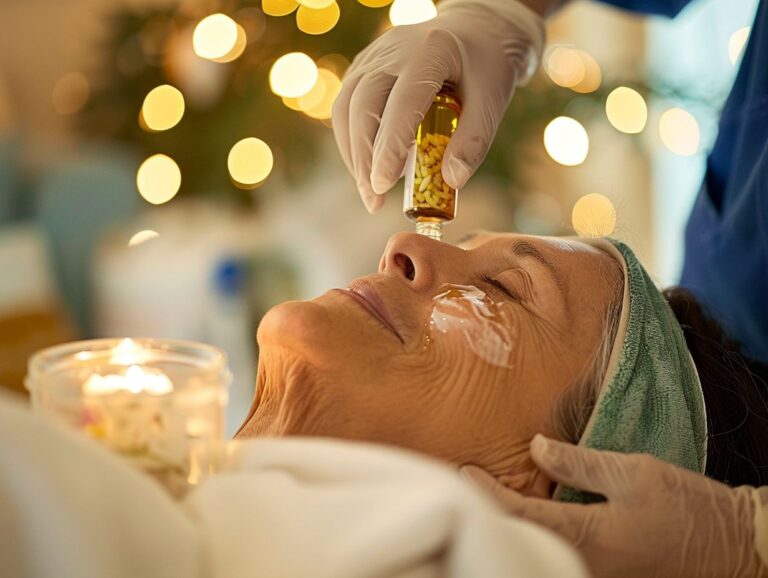How Common is Aromatherapy
Curious about the world of aromatherapy and essential oils? Wondering how these natural remedies can benefit your health and well-being?
This article explores the basics of aromatherapy, including what essential oils are, how they are extracted, and the numerous benefits they offer.
From reducing stress and anxiety to boosting the immune system, aromatherapy has a wide range of applications. We also discuss the different methods of using aromatherapy and important safety precautions to keep in mind.
Stay tuned to learn more about the popular essential oils used in aromatherapy benefits and the most common uses of this ancient practice.
Key Takeaways:
What is Aromatherapy?
Aromatherapy is a holistic healing treatment that uses natural plant extracts, known as essential oils, to promote health and well-being. It has been practiced for centuries in various cultures around the world, and its popularity has grown significantly in recent years due to its therapeutic benefits and integration into mainstream healthcare practices.
Essential oils are the foundation of aromatherapy, each possessing unique properties that can impact physical, emotional, and mental well-being. The practice of aromatherapy dates back to ancient civilizations such as Egypt, China, and India, where aromatic plant extracts were used for medicinal and spiritual purposes.
Today, aromatherapy plays a crucial role in integrative medicine, complementing traditional healthcare approaches with natural remedies. The U.S. FDA regulates essential oils as cosmetics, requiring stringent labeling and safety standards to protect consumers from potential risks. Despite regulatory challenges, the aromatherapy market continues to thrive globally, driven by increasing consumer demand for natural and holistic wellness solutions.
What Are Essential Oils?
Essential oils are concentrated plant extracts that capture the natural fragrance and beneficial properties of plants. These oils are commonly used in aromatherapy practices to promote physical and mental well-being through their therapeutic effects on the body and mind. Each essential oil has unique properties and scents that contribute to its specific benefits.
Extracting essential oils involves a meticulous process that varies depending on the plant source. Common methods include steam distillation, solvent extraction, and cold pressing. The extracted oils contain the essence of the plant, including its aromatic compounds and therapeutic properties. Aromatherapists carefully select and blend different essential oils to create personalized remedies for various ailments or to induce relaxation and stress relief.
The diverse range of fragrances offered by essential oils, from floral and citrusy to woody and earthy, cater to individual preferences and therapeutic needs. For instance, lavender essential oil is known for its calming properties, while peppermint oil is often used for its invigorating effects. These oils can be inhaled, applied topically, or diffused into the air to experience their benefits.
How Are Essential Oils Extracted?
Essential oils are extracted from plants through various methods such as steam distillation, cold pressing, or solvent extraction. The choice of extraction method can impact the quality and efficacy of the resulting essential oil.
Steam distillation is one of the oldest and most common methods used for extracting essential oils. This technique involves passing steam through the plant material, causing it to release its aromatic compounds.
Cold pressing, on the other hand, is typically used for extracting oils from citrus fruits, where mechanical pressure is applied to the peels to squeeze out the oils.
Solvent extraction utilizes chemical solvents like hexane to extract oils from delicate flowers or plants.
Advancements in extraction technologies have led to the development of more efficient and precise methods, such as supercritical CO2 extraction and enfleurage.
Supercritical CO2 extraction uses carbon dioxide in a state between a gas and a liquid to extract oils without leaving behind any chemical residues.
Enfleurage is a traditional method that involves placing flowers on a layer of fat to absorb their aromatic compounds.
What Are the Benefits of Aromatherapy?
Aromatherapy offers a range of benefits for both physical and mental health. From reducing stress and anxiety to improving sleep quality and boosting the immune system, aromatherapy practices have shown promising results in enhancing overall well-being through the therapeutic use of essential oils.
Research studies have indicated that certain essential oils, such as lavender and peppermint, can help alleviate headaches and migraines when used in aromatherapy treatments.
In clinical trials, aromatherapy has been found to be effective in reducing symptoms of depression and improving mood in individuals undergoing treatment.
The use of essential oils like tea tree oil and eucalyptus oil in aromatherapy has demonstrated antimicrobial properties, aiding in fighting off common colds and respiratory infections.
Reduces Stress and Anxiety
Aromatherapy has been recognized for its ability to reduce stress and anxiety levels, promoting relaxation and a sense of calm. Essential oils like lavender, bergamot, and chamomile are commonly used in aromatherapy practices to alleviate stress and induce a state of tranquility.
Research has shown that inhaling the aroma of lavender can significantly lower cortisol levels, the stress hormone, leading to a more relaxed state.
Similarly, the citrusy scent of bergamot oil has been linked to reducing stress and improving mood, making it a popular choice for aromatherapy blends targeting anxiety relief.
The gentle floral fragrance of chamomile oil is known for its calming effects on the mind and body, helping to alleviate tension and promote better sleep.
Improves Sleep Quality
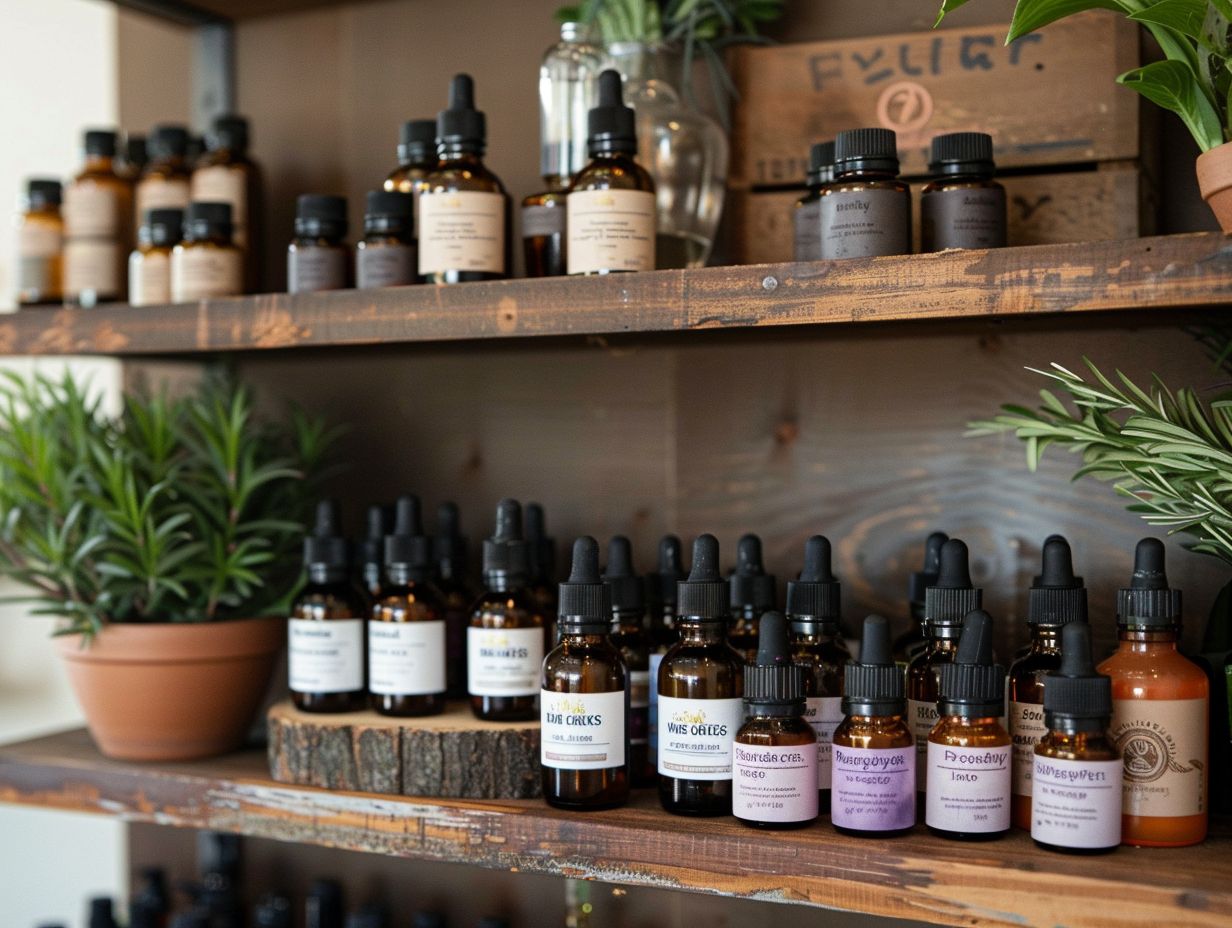
Aromatherapy is often used as a natural remedy to improve sleep quality and treat insomnia. Essential oils such as lavender, sandalwood, and cedarwood have sedative effects that can help promote relaxation and create a conducive environment for restful sleep.
Many studies have shown that these essential oils not only have calming properties but also can help reduce stress and anxiety levels, which are often significant contributors to sleep disturbances.
For instance, lavender oil has been found to improve sleep patterns, increase the duration of a good night’s sleep, and enhance overall sleep quality. Similarly, the warm and woody scent of sandalwood oil has been linked to inducing a state of deep relaxation, aiding in falling asleep faster and staying asleep longer.
Relieves Pain and Inflammation
Aromatherapy has shown promising results in relieving pain and reducing inflammation through the application of analgesic essential oils such as eucalyptus, peppermint, and ginger. These oils can be used topically or through inhalation to alleviate discomfort and support the body’s natural healing processes.
Research indicates that essential oils possess compounds that interact with the body’s receptors, influencing neurotransmitters to modulate pain perception and inflammatory pathways.
For instance, eucalyptus oil contains eucalyptol, which has been linked to anti-inflammatory effects, while peppermint oil’s menthol provides a cooling sensation that can help with pain relief.
Clinical trials have demonstrated the efficacy of aromatherapy in managing conditions like migraines, arthritis, and muscle soreness, showcasing the versatility and potential of essential oils in holistic pain management.
Boosts Immune System
Aromatherapy is believed to have immune-boosting properties that can help strengthen the body’s natural defenses against infections and illnesses. Essential oils like tea tree, lemon, and eucalyptus are known for their antimicrobial and immune-supporting benefits.
Tea tree oil is particularly effective in combating bacteria, viruses, and fungi, making it a popular choice for boosting immune function. Lemon oil, with its uplifting scent, also possesses antiviral properties that can contribute to overall immune health. Eucalyptus oil is well-known for its decongestant effects, which can aid respiratory health and support the immune system during cold and flu seasons. When used in aromatherapy, these essential oils not only enhance physical well-being but also promote mental clarity and relaxation, creating a holistic approach to immune support in integrative medicine strategies.
What Are the Different Methods of Using Aromatherapy?
Aromatherapy can be administered through various methods, including inhalation, topical application, and aerial diffusion. Each method offers unique benefits and applications for harnessing the therapeutic properties of essential oils based on individual preferences and desired outcomes.
Regarding inhalation, the essential oils are either diffused into the air using a diffuser or inhaled directly through steam inhalation or inhaler sticks. This method is quick-acting and can have a direct impact on the respiratory system and emotions.
Topical application, on the other hand, involves diluting essential oils with carrier oils like coconut or jojoba oil and applying them directly to the skin. This method can target specific areas of the body for localized relief or overall skin benefits.
For aerial diffusion, essential oils are diffused into the air using devices such as nebulizers or ultrasonic diffusers. This method can purify the air, create a calming ambiance, or even help with respiratory issues.
Inhalation
Inhalation is one of the common methods of enjoying the benefits of aromatherapy, where essential oils are diffused into the air for inhalation. This method is effective in promoting respiratory health, relaxation, and emotional well-being, making it particularly beneficial in times of stress or illness.
When inhaling essential oils, the molecules travel through the nasal passages and stimulate the olfactory nerves in the nose, sending signals to the limbic system of the brain, which regulates emotions. This direct pathway to the brain can have a profound impact on mood and stress levels. Studies have shown that certain essential oils like lavender and eucalyptus can help reduce anxiety and improve sleep quality when inhaled regularly.
Topical Application
Topical application of essential oils involves diluting them with carrier oils and applying them directly to the skin for localized benefits. This method is commonly used in skincare routines, massage therapies, and pain management strategies to harness the healing properties of essential oils.
When incorporating essential oils into a topical application, it is essential to choose the right carrier oil, as it acts as a base that helps to deliver the essential oils to the skin without causing irritation.
One of the key benefits of using essential oils in skincare practices is their ability to address various skin concerns, such as acne, eczema, and aging signs, due to their antimicrobial, anti-inflammatory, and antioxidant properties.
Safety precautions must be taken when using essential oils topically, including proper dilution ratios to avoid skin sensitivities and conducting a patch test before widespread application.
The therapeutic applications of essential oils in promoting skin health and wellness extend to enhancing relaxation, improving circulation, and supporting overall skin rejuvenation.
Aerial Diffusion
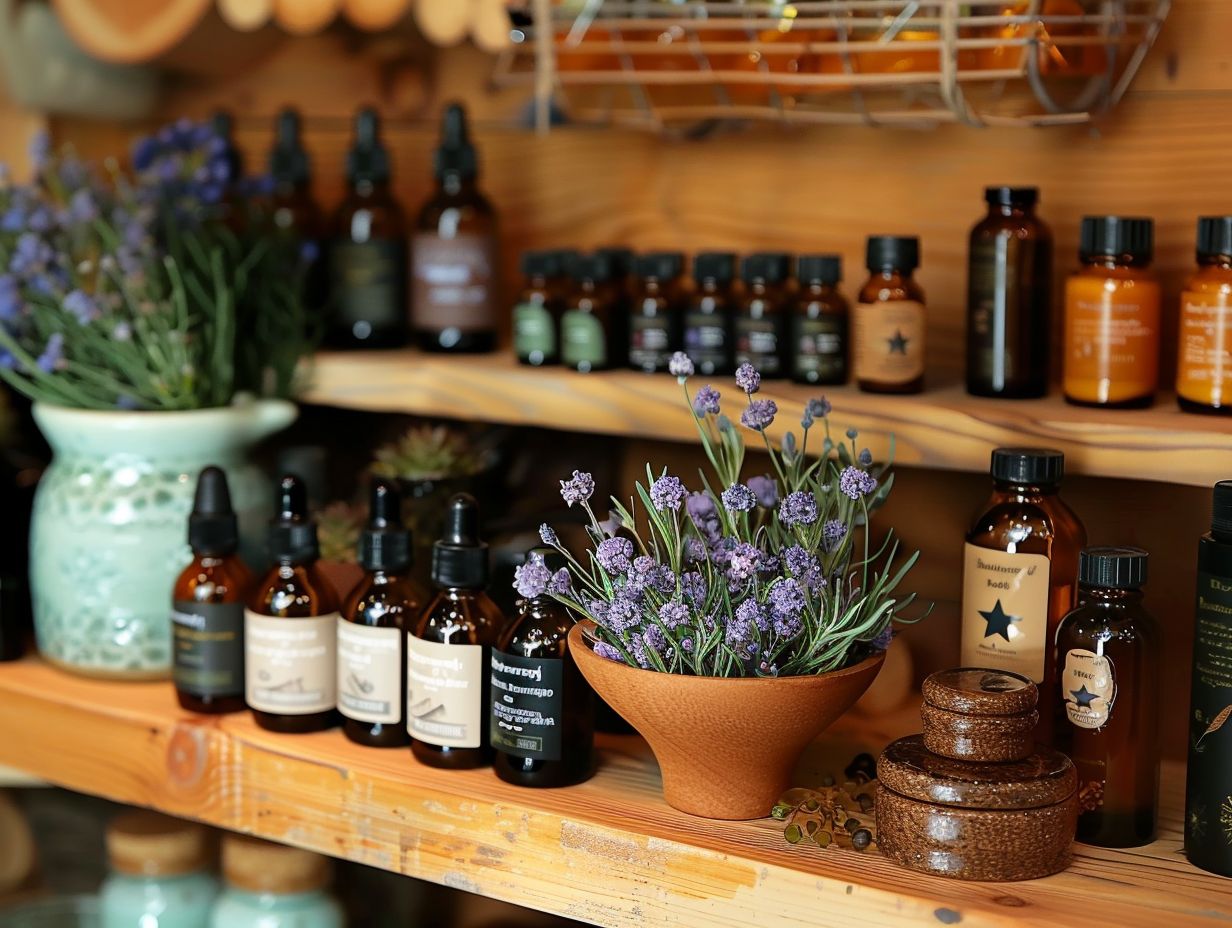
Aerial diffusion involves dispersing essential oils into the air using diffusers or nebulizers, creating a fragrant and therapeutic ambiance in living or work spaces. This method is preferred for enhancing mood, purifying the air, and promoting relaxation through the inhalation of aromatic molecules.
Diffusing essential oils can have a significant impact on mental and emotional well-being. Studies suggest that certain scents like lavender, citrus, or peppermint can uplift spirits, reduce anxiety, and improve focus. The antimicrobial properties of essential oils help cleanse the air from pathogens, allergens, and pollutants, contributing to a healthier indoor environment. To maximize the benefits of aerial diffusion, it’s essential to choose the right diffuser based on factors like room size, design preferences, and the intensity of aroma desired.
What Are the Safety Precautions for Using Aromatherapy?
While aromatherapy offers numerous health benefits, it is essential to follow safety precautions when using essential oils to prevent adverse reactions or sensitivities. Diluting essential oils, avoiding sun exposure after topical application, and consulting with qualified professionals are key safety measures to ensure the safe and effective use of aromatherapy.
A crucial aspect of safe aromatherapy practice is the proper dilution of essential oils. Essential oils are highly concentrated and can cause skin irritation or other adverse effects if used undiluted. To dilute essential oils safely,
- mix a few drops of essential oil with a carrier oil like jojoba, coconut, or almond oil
. This dilution not only reduces the risk of skin irritation but also helps in better absorption and effectiveness of the essential oil.
Dilute Essential Oils
Proper dilution of essential oils is crucial to avoid skin irritation or allergic reactions. Essential oils are highly potent and should be diluted with carrier oils before topical application to reduce the risk of adverse effects.
When diluting essential oils, it is recommended to use a ratio of 2-3% for facial products and a slightly higher ratio of 5% for body products. Dilution ratios may vary based on individual sensitivities, but it is generally safer to start with a lower concentration and adjust as needed. Undiluted essential oils can cause skin sensitization, burns, and even toxicity due to their concentrated nature. Therefore, patch testing is essential before applying any diluted essential oil blend to a larger area to ensure no adverse reactions occur.
Avoid Sun Exposure
Certain photosensitive essential oils can increase skin sensitivity to sunlight, leading to sunburn or skin damage. It is crucial to avoid sun exposure after applying these oils topically and to opt for evening or indoor use to minimize the risk of adverse reactions.
Essential oils such as bergamot, lemon, and lime are known to be photosensitive and should be used with caution during the day. These oils contain compounds that can react with UV rays and cause skin irritations or discoloration. It is advisable to use these oils in the evening or before going to bed to avoid potential harm. Always perform a patch test before applying any essential oil to check for any allergic reactions.
Protecting your skin from sun damage is crucial when using photosensitive oils. It is recommended to wear sunscreen, protective clothing, and hats when exposed to sunlight after using these oils. Taking these precautions can help prevent any negative effects on your skin and allow you to enjoy the benefits of essential oils safely.
Consult with a Professional
Seeking guidance from trained aromatherapists, clinicians, or healthcare professionals is advisable before starting aromatherapy treatments, especially if you have underlying health conditions or are unsure about specific oil interactions. Professional consultation can ensure personalized and safe aromatherapy practices.
When embarking on your journey with aromatherapy, it’s crucial to understand the role of clinicians in guiding safe essential oil usage. These professionals can offer valuable insights into potential side effects, proper dosages, and contraindications, helping you navigate the vast world of essential oils with confidence and caution.
When selecting a qualified aromatherapy practitioner, look for individuals who have completed accredited training programs, possess certifications, and have a solid understanding of both the therapeutic and safety aspects of essential oils. Remember, individualized treatment plans tailored to your specific needs are the cornerstone of effective and beneficial aromatherapy practices.
How Common is Aromatherapy?
Aromatherapy has gained widespread popularity globally, with an increasing number of individuals incorporating aromatherapy practices into their daily routines for health and wellness benefits. The market for aromatherapy products and services continues to grow steadily, reflecting a rising demand for natural and holistic healthcare solutions.
According to market research, the global aromatherapy market is projected to experience substantial growth in the coming years. The increasing awareness of the therapeutic benefits of essential oils and natural fragrances has contributed to the expansion of the market. Consumers are showing a preference for organic and plant-based products, driving the market towards more sustainable and eco-friendly options.
Consumer attitudes towards aromatherapy have also shifted, with more individuals opting for aromatherapy as a complementary or alternative approach to traditional medicine. The compound annual growth rate (CAGR) for the aromatherapy market is on a positive trajectory, indicating a promising future for the industry.
What Are the Popular Essential Oils Used in Aromatherapy?
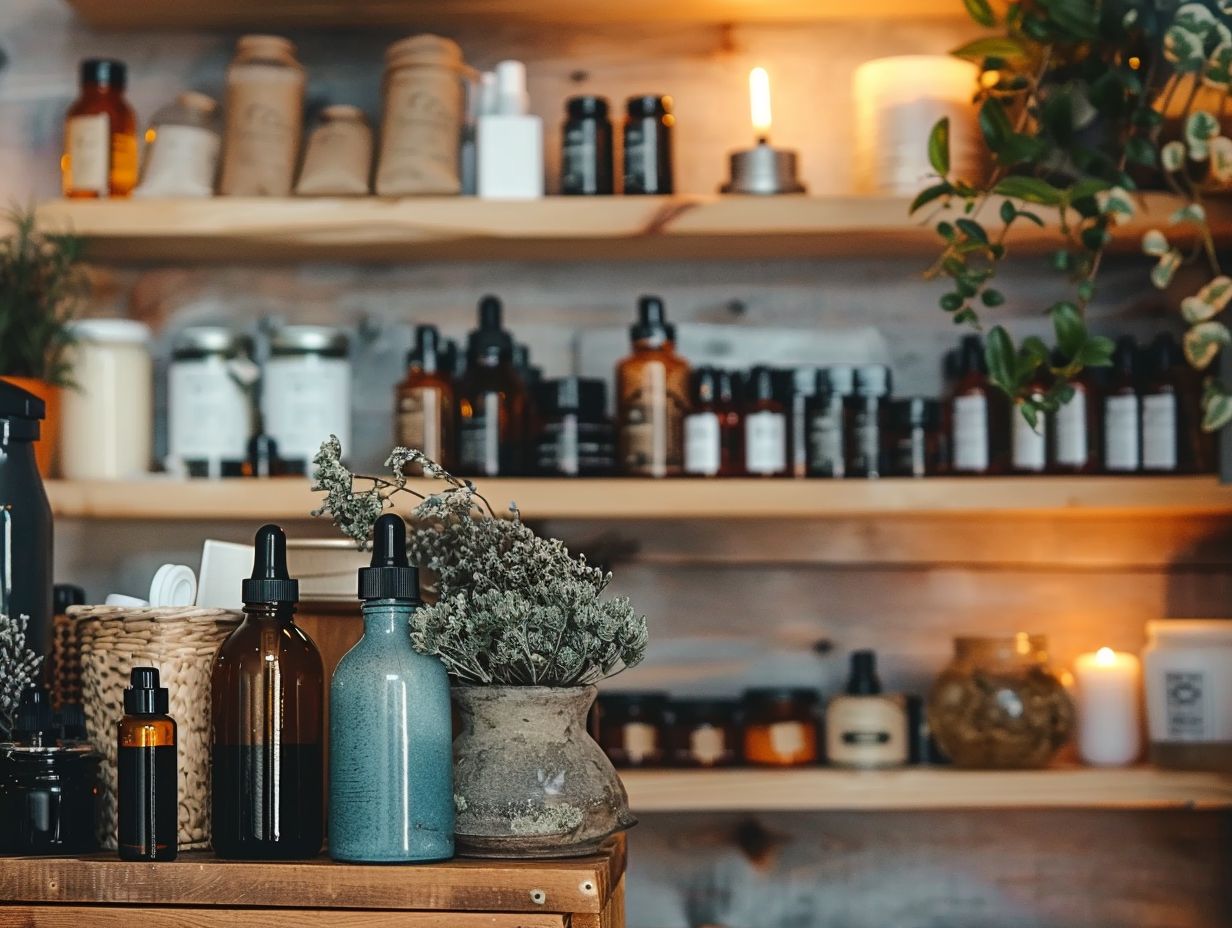
These essential oils have gained favor for their therapeutic properties that can address common ailments such as stress, insomnia, and headaches.
- Lavender is renowned for its calming effects, promoting relaxation and aiding in sleep.
- On the other hand, peppermint is known for its invigorating scent that can help alleviate headaches and boost energy levels.
- Additionally, eucalyptus oil is valued for its respiratory benefits, often used to clear congestion and support easy breathing.
What Are the Most Common Uses of Aromatherapy?
Aromatherapy is commonly used for a range of purposes, including stress relief, relaxation, pain management, and immune support. Its diverse applications in healthcare settings, spas, homes, and wellness centers illustrate the versatility and effectiveness of aromatherapy as a natural therapy option.
Therapeutic applications of essential oils encompass various treatments such as massage therapy, inhalation, and topical application. In medical facilities, essential oils like lavender and peppermint are utilized to aid in managing anxiety, nausea, and pain. In wellness centers, aromatherapy diffusers are employed to create a calming and rejuvenating ambiance. The broad spectrum of benefits associated with aromatherapy includes improved sleep quality, enhanced mood, and enhanced relaxation.
Frequently Asked Questions
How Common is Aromatherapy?
Aromatherapy is a popular practice that has been used for centuries. It is commonly used for relaxation, pain relief, and promoting overall well-being. With its numerous benefits, it has become a widely used form of alternative medicine.
Is Aromatherapy widely accepted and practiced?
Yes, Aromatherapy is widely accepted and practiced around the world. Many cultures have been using essential oils and aromatherapy for therapeutic purposes for centuries. It has gained popularity in recent years and is now commonly used in spas, wellness centers, and homes.
How many people use Aromatherapy?
The exact number of people who use Aromatherapy is difficult to determine, as it is a self-administered practice. However, research estimates that millions of people use essential oils and aromatherapy for various purposes globally.
What are the most common uses of Aromatherapy?
Aromatherapy is commonly used for relaxation, stress relief, pain management, and improving overall well-being. It is also used to enhance mood, improve sleep, and boost immunity.
Is Aromatherapy a mainstream form of treatment?
Aromatherapy is not considered a mainstream form of treatment, but it is gaining recognition and acceptance in the medical community. It is often used as a complementary therapy alongside conventional treatments to support overall health and wellness.
Where can I find reliable information about Aromatherapy?
You can find reliable and evidence-based information about Aromatherapy from reputable sources such as medical journals, books, and certified aromatherapists. It is important to be cautious of misinformation and consult a trained professional before using essential oils for any health concerns.

